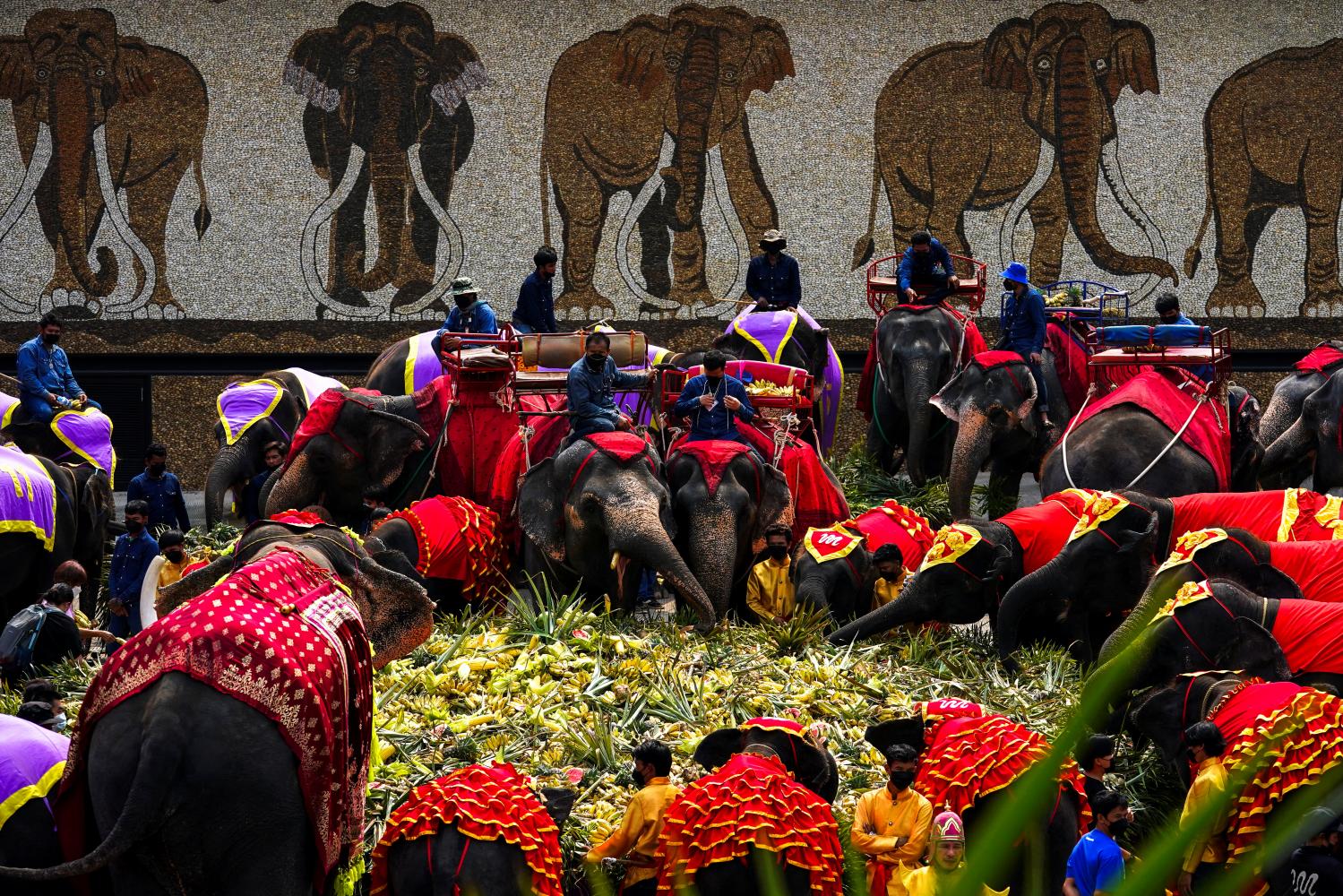
The Department of National Parks, Wildlife and Plant Conservation (DNP) has drawn up a 10-year action plan to mitigate human-elephant conflicts that have occurred wherever elephants and locals share the same habitat, competing for the same resources.
The government on May 26, 1998, designated March 13 as National Elephant Day in a bid to raise awareness about the animal's importance to society.
To mark National Elephant Day on Sunday, the Bangkok Post spoke to DNP authorities and villagers taking part in addressing the human-elephant problem.
The DNP is marking Elephant Day by launching a campaign to clear harmful hunting traps in forests nationwide, after elephants were injured or killed by these traps.
According to the Human and Elephant Voices Network's website, 69 out of 189 protected areas in the kingdom are habitats for Asian elephants.
The network says there are approximately 3,084-3,500 wild elephants in Thailand, adding that compared to 14 years ago, the elephant population today is increasing.
However, it says there are still threats to wild elephants: habitat loss and degradation due to the increase in human population and agricultural encroachment, a trend the network said also occurs in other countries.
Poaching is also still a major problem threatening wild elephants, it says.
The network says that human-elephant conflicts arise at rice, corn and cassava fields near elephant habitats, sometimes resulting in elephant deaths by electrocution from electric fences or gunshot.
It says that although many organisations in the past have tried to solve the problem, the issue persists.
The DNP's 2020-2029 action plan aims to provide food and water resources and a friendly environment for elephants living in protected forest zones while creating a better understanding of elephants in nearby local communities.
'Invasions persist'
Supagit Vinitpornsawan, director of a research centre for wild elephants in DNP protected areas, said elephant invasions of agricultural zones fell by 7.2% last year when compared to 2020 when 686 invasions were recorded.
However, the number is still high, so the DNP has implemented its plan with the hope of minimising human-elephant conflicts in the future, he said.
"We have found the problem is in certain areas where the number of elephants is higher than the amount of resources the forest can provide," Mr Supagit said.
"So we need to have unique plans to deal with unique problems in different zones," he said.
According to the DNP, there are five main forest complexes with elephant invasion problems: The eastern forest; the western forest; the Dong Payayen-Khao Yai forest; the Phu Khiew-Nam Nao forest; and the Kaeng Krachan forest.
He said these zones contain large numbers of elephants, prompting stakeholders to discuss whether the action plan is effective in dealing with the problem.
They also proposed more measures, such as birth control and relocating some to other forest areas, he said.
Mr Supagit said birth control is a sensitive topic and needs more studies before it can be considered.
However, he said relocation could be an option as the department is studying possible destinations, such as the Western Forest Complex where there is still space for elephants.
"This is something that has never been done before, so we need to study it carefully," Mr Supagit said.
"This is because we don't want to bring problems from one place to another," he added.
Yielding 'good results'
Weerapong Korawa, chief of the Khao Aung Rue Nai Wildlife Sanctuary Park in Chachoengsao province, one of the country's hotspots for human-elephant conflicts, said the DNP's 10-year action plan has shown some positive results, especially in creating a better understanding among members of local communities.
"The problem can't be easily dealt with," he said. "It needs more time and close cooperation from all stakeholders, especially local community members."
"We also need support from other partners to help make the plan a success," he said.
He said that one approach to push wild elephants back into the deep forests is still important as it would prevent the animals from coming out and trampling on the crops of local people in this Eastern Forest Complex.
Currently, there are 233 villages located in this forest, and wild elephants tend to come out at night to invade their crop fields, he said.
Mr Weerapong added that the DNP action plan also includes installing an alarm system and training locals.
Cooperation is key
Saengtien Krasaeto, assistant to the Sa Laung village chief in Sa Kaeo's Wang Nam Yen district, said her community is under the DNP's Kacha-Anurak elephant conservation project, which aims to increase cooperation in mitigating human-elephant conflicts.
Ms Saengtien said her community has received support from several private and public agencies providing them with cows, chickens and ducks for sale and consumption.
To deal with the human-elephant conflict, she said locals work together with administrative and forestry officials to patrol the nearby woods for elephants and drive them back into the deep forest.
"We live in the forest, so we can't avoid the problem," she said. "We need to adjust and limit the damages."
"Fortunately, nobody in the village has been killed by an elephant in our community," she said.
"We have never used aggression and violence to get rid of elephants," she said. "What we do is set fire in our fields or turn on the radio at night, as light and sound makes [elephants] know that there are people nearby."
"Elephants can recognise human voices and won't come to our place," she said.







